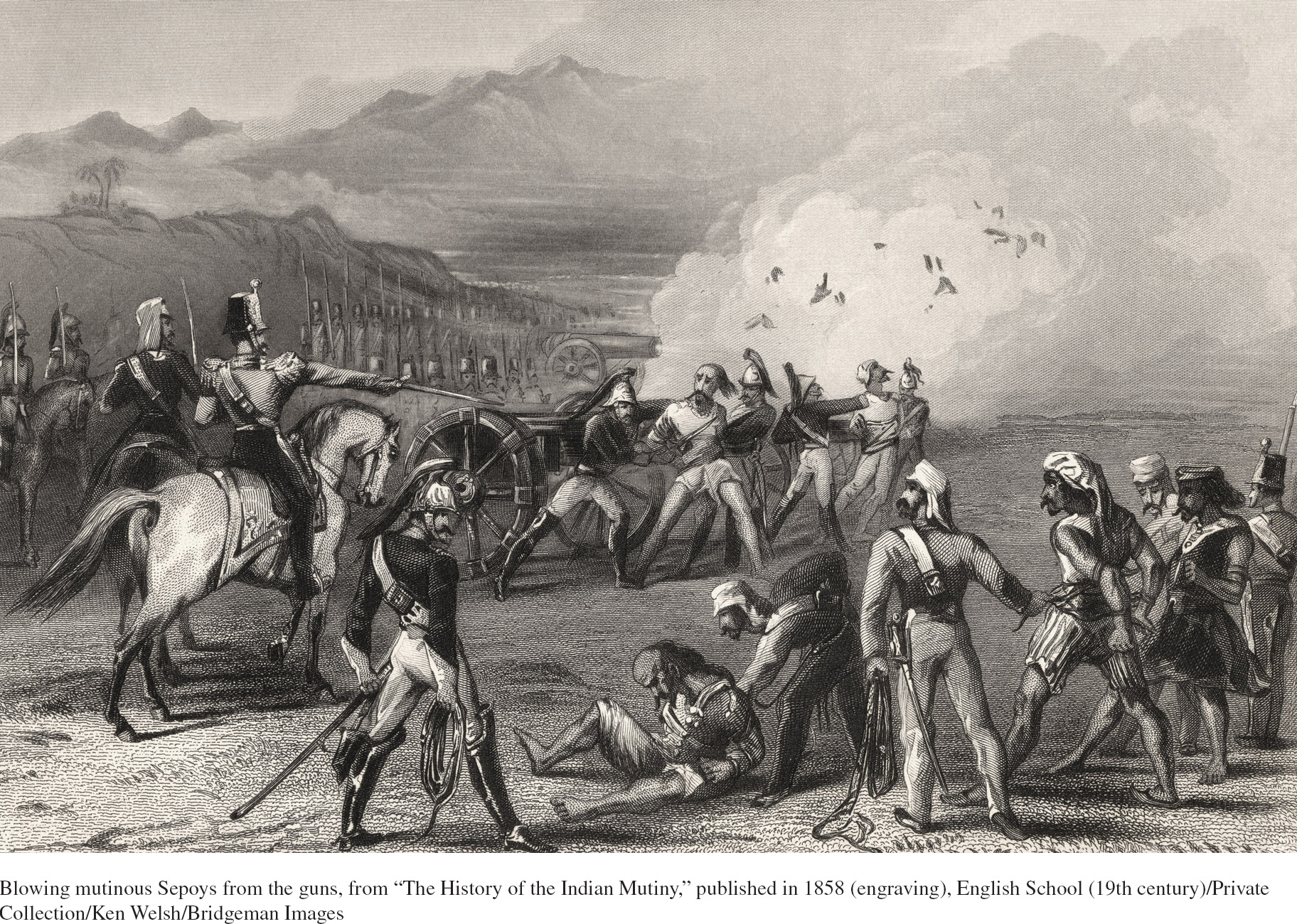Source 18.1
Images of Colonial Rule
The British colonial presence in India has been recorded in a plethora of artistic representations. The four images that follow provide a highly selective glimpse at several features of that experience.
Questions to consider as you examine the sources:
- What does each of these images convey to you about colonial India?
- How might each of these scenes have been experienced by both British and Indian participants?
- What kinds of interactions between rulers and ruled are suggested in these images?
Source 18.1A
A British Breakfast in India

A British Breakfast in IndiaBritish officials and their families sought to re-create as much of English life as possible in the very different environment of India and to maintain a sharp separation between themselves and Indians. In what ways does this engraving, published in 1842, suggest that effort? From Anglo Indians, engraved by J. Bouvier, 1842/Private Collection/The Stapleton Collection/Bridgeman Images
Source 18.1B
Tiger Hunting in Colonial India

Tiger Hunting in Colonial IndiaA favorite sport among British colonial elites and tourists, tiger hunting served to display Victorian era “manliness,” “a virile, muscular, patriotic sense of endurance.” It also suggested the invincibility of the colonial state in triumphing over such a savage beast as well as its benevolence in ridding villages of their “man-eating tigers.”1 Private Collection/Peter Newark Military Pictures/Bridgeman Images
Source 18.1C
The British and Indian Princes

The British and Indian PrincesIn many parts of colonial India, the British governed indirectly, through traditional authorities known as “princes.” Here Prince Mahadaji Sindhia entertains two British military officers at a traditional Indian nautch, or dance concert, performed by professional Indian dancing girls around 1820. Stylistically it differs from the other images in this selection because it was created by an Indian artist rather than a British one. What does this image suggest about British efforts to relate to Indian elites and Indian culture?British Library, London, UK/© British Library Board. All Rights Reserved/Bridgeman Images
Source 18.1D
Blowing from a Gun

Blowing from a GunFollowing Mughal precedents, the British frequently employed a particularly horrific form of public execution for rebels by tying the victim, or sometimes several victims, to the mouth of a cannon and then firing it. This practice was used quite extensively during the Indian uprising of 1857–1858, as illustrated in this image. The British argued that it served as a deterrent to rebellion, was more humane than the earlier Mughal practice of “flogging to death,” and allowed high-caste rebels to avoid the disgrace of being polluted by contact with the untouchables who often conducted hangings. For the families of the victims, both Muslim and Hindu, it proved almost impossible to perform proper funeral and burial rites. The practice was used as late as 1871, but then was discontinued. Blowing mutinous Sepoys from the guns, from “The History of the Indian Mutiny,” published in 1858 (engraving), English School (19th century)/Private Collection/Ken Welsh/Bridgeman Images
Notes
- Kevin Hannam and Anya Diekmann, Tourism and India: A Critical Introduction (New York: Routledge, 2011), 69–
70.